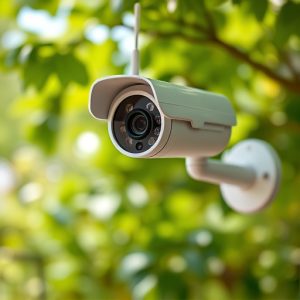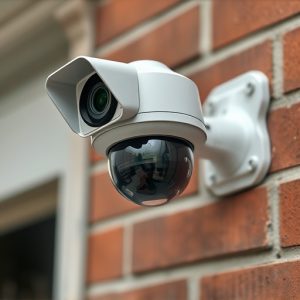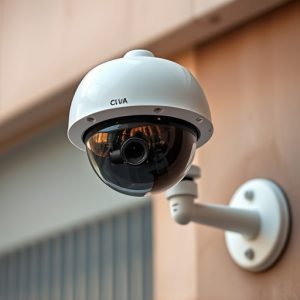Do Dummy Security Cameras Deter Crime? A Comprehensive Guide
Dummy security cameras, though non-functional, act as powerful psychological deterrents against crim…….
Dummy security cameras, though non-functional, act as powerful psychological deterrents against crime by creating the illusion of enhanced surveillance. Strategically placed in visible areas, they can significantly reduce criminal intent due to the belief that they're under watch. While their effectiveness varies based on context and mixing with real cameras, they contribute to safer environments by discouraging criminals. However, deployment must balance crime deterrence with individual rights, adhering to local laws, especially in public spaces, to maintain transparency and ethical security practices.
“Unravel the secrets behind dummy security cameras and their role in crime deterrence. This comprehensive guide explores the psychological impact of fake surveillance devices, delving into different types and strategic placement techniques. From legal considerations to real-world effectiveness, we dissect the debate on whether dummy cameras truly deter criminal activity. Understanding these seemingly innocuous tools could offer valuable insights for enhancing security without breaking the bank.”
- Understanding Dummy Security Cameras: A Comprehensive Overview
- The Psychology Behind Using Fake Security Devices for Crime Deterrence
- Types of Dummy Security Cameras and Their Placement Strategies
- Legal Considerations and Ethical Implications of Installing Fake Surveillance Equipment
- Real-World Scenarios: Are Dummy Cameras Effective in Crime Prevention?
Understanding Dummy Security Cameras: A Comprehensive Overview
Dummy security cameras, also known as mock or fake surveillance cameras, are an increasingly popular tool for enhancing home and business security while keeping costs down. These realistic-looking devices mimic real security equipment, with some models even featuring LED flashlights and moving parts like lenses that rotate to mimic the view of a genuine camera. Their primary purpose is not to actively monitor and record footage but rather to serve as a powerful deterrent against potential criminals.
The effectiveness of do dummy security cameras deter crime has been widely debated. While their visual presence alone can act as a psychological barrier, preventing would-be intruders from targeting specific locations, the reality of their functionality varies. Genuine camera feeds provide real-time data and evidence in the event of an actual crime, but dummy cameras offer only a facade. Nonetheless, many property owners find them valuable for creating the perception of enhanced security, which can significantly deter criminal activity in certain scenarios.
The Psychology Behind Using Fake Security Devices for Crime Deterrence
The concept of utilizing fake security monitoring devices, particularly dummy cameras, as a crime deterrent has an intriguing psychological underpinning. Human behavior is often influenced by perceptions of safety and security, and this principle extends to criminal activities. By strategically placing realistic-looking but non-functional dummy cameras, individuals and businesses can create the illusion of enhanced surveillance. This perception alone can act as a powerful deterrent, encouraging potential criminals to reconsider their actions.
The effectiveness lies in the mind’s response to visual cues. Dummy cameras simulate the presence of active security measures, triggering an instinctive sense of being watched. This psychological effect is particularly notable in high-crime areas where visible security indicators can significantly alter behavior patterns. Thus, while the devices themselves lack operational capabilities, their strategic use can contribute to a safer environment by discouraging criminal intent.
Types of Dummy Security Cameras and Their Placement Strategies
Dummy security cameras, also known as decoy or mock surveillance equipment, come in various types designed to mimic real security systems. These range from realistic fake cameras with LED indicators to more advanced models that can be remotely controlled and monitored. The key to effective use lies in strategic placement, often mimicking the layout of a genuine security system.
Placing these dummy cameras in highly visible areas like entry points, windows, and prominent corners can act as a powerful deterrent to potential criminals. However, it’s crucial not to overdo it; an obvious excess of fake cameras might alert savvy thieves to their presence. Instead, mix real and dummy cameras at different heights and angles to create an authentic-looking security setup, enhancing the overall safety and security perception without necessarily preventing crime.
Legal Considerations and Ethical Implications of Installing Fake Surveillance Equipment
The legal and ethical landscape surrounding the installation of fake security monitoring devices, or dummy cameras, is a complex terrain that requires careful navigation. While the primary purpose of these devices is to deter potential criminals, their use raises significant concerns. Legally, it’s crucial to understand the rules governing surveillance in your jurisdiction. Some areas have strict regulations on the placement and usage of cameras, especially in public spaces or private properties visible from outside. Using dummy cameras could potentially violate privacy laws if not set up with proper authorization and transparency.
Ethically, there are profound implications to consider. The mere presence of security equipment, even if fake, might create a sense of heightened surveillance, impacting the behavior and freedoms of individuals in the area. This is particularly sensitive in public spaces where citizens should expect a certain level of privacy. Moreover, the potential for deception raises questions about trust and integrity within communities, as residents may question the authenticity of security measures intended to protect them, thus undermining community safety initiatives.
Real-World Scenarios: Are Dummy Cameras Effective in Crime Prevention?
In real-world scenarios, dummy security cameras have been a subject of debate when it comes to crime prevention. While their physical presence can act as a visual deterrent, the effectiveness of these devices in actually reducing criminal activity is not universally agreed upon. Studies have shown that dummy cameras can lead to a perception of enhanced security, making potential criminals think twice before striking. The mere sight of a camera, even if it’s not functional, can create an atmosphere of caution and deter individuals from engaging in illegal activities.
However, critics argue that the impact is often short-lived and limited to areas with low crime rates. In high-crime zones, real working security cameras are generally more effective due to their ability to record evidence and facilitate quicker response times for law enforcement. The success of dummy cameras largely depends on the context; they can be highly beneficial in certain neighborhoods or commercial spaces where criminals might be deterred by the appearance of surveillance but may not have a significant impact in areas with established security protocols and active monitoring.
While dummy security cameras may offer a cost-effective crime deterrent solution, their effectiveness depends heavily on placement and situational context. While they can deter opportunistic criminals, providing a false sense of security might also lead to overconfidence among residents. Balancing the psychological benefits with ethical considerations is crucial when deploying these devices. Ultimately, the success of dummy cameras in preventing crime remains an open question, requiring further empirical research to ascertain their long-term impact and optimal use cases.


